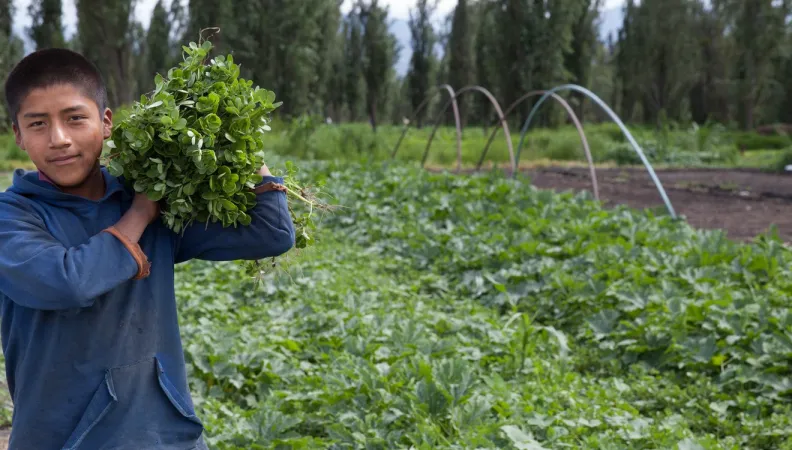Share the page
AFD uses Strong Sustainability to Support Partners’ Transitions to Greener Development
Published on

Strong sustainability, the principle that our natural resources are critical and cannot be replaced by any other form of capital, is enjoying a resurgence in development thinking. It’s a riposte to the notion that physical capital, such as machinery or technological advances can be a substitute for natural capital. AFD promotes strong sustainability in a number of countries, to assist them in their transition to more ecologically balanced forms of development.
Seven years. It’s the time that has elapsed since the UN General Assembly adopted the 17 Sustainable Development Goals (SDGs) in September 2015, and it’s also the time left until 2030, the deadline for achieving them. Yet the activities undertaken by governments committed to fulfilling them are increasingly at odds with the targets themselves.
These contradictions, and repeated warnings from the Intergovernmental Panel on Climate Change (IPCC), have helped bring the notion of strong sustainability back to the forefront of development debate. Its central tenet is the fact that the economic and social spheres cannot exist separately from the environment. It stresses the need to respect the planet’s finite resources, and the way in which these limits constrain economic growth. Above all, it insists on the need to preserve a “critical natural capital” to pass on to future generations.
Further reading: “Strong Sustainability” for (truly) Sustainable Development
“Strong sustainability is a way of achieving all the SDGs together, rather than checking them off separately,” says Antoine Godin, AFD economist. “It is not possible a priori to replace the destruction of natural capital with economic or social capital. On this basis, how do we build development trajectories that respect all these dimensions?”
Limited implementation
The Adapt’Action program is an example where AFD Group is working to apply the principle of strong sustainability on the ground. AFD is assisting 15 countries and regional organizations particularly vulnerable to the impacts of climate change with the implementation of a combined climate, social and economic response.
Through its 2050 Facility, AFD Group is providing financial support to some 30 developing countries among the highest emitters of greenhouse gas, or most vulnerable to its impacts, in their efforts to establish low-carbon development plans for 2050. These plans take into account the necessary institutional, economic, financial, technological and social changes.
Further reading: Biodiversity: A Victim of Climate Change...and Source of Solutions
For several years, AFD has also been conducting research programs on ecological transitions and inequalities. These programs have made it possible to test and deploy several useful tools for the development of strong sustainability trajectories.
GEMMES model
The GEMMES macroeconomic modelling tool is used to assess and improve development patterns in Colombia, India, Mexico, Morocco, Tunisia and Vietnam. “GEMMES aims to show how long-term development trajectories, compatible with the fight against climate change and protection of biodiversity, question the macroeconomic and social sustainability,” says Antoine Godin.
In Tunisia, the project has sought to identify macroeconomic and ecological vulnerabilities caused by the impacts of climate change on agriculture and water availability. The objective was to build an economic model to allow crop yield forecasts to be made until 2050 and consider policy options.
“For example, we show that climate change will result in losses of agricultural production. A possible response is to consider substantial investments in crop irrigation. But these choices can lead to changes in production and consumption patterns, causing imbalances and tensions,” says Godin.
"A very detailed analysis”
Another AFD tool, the ESTEEM model “provides a very detailed analysis,” says Godin. It identifies the economic risks countries may face in their ecological transition. “It makes it possible to identify the industries that may disappear due to this transition and model the economic and social impacts.” The end of coal mining will not have the same consequences in South Africa as it will in Colombia, for example.
Further reading: Uzbekistan: More Production, with Less Environmental Impact
Used for the first time in Uzbekistan, the tool has contributed to supporting the country in its ecological transition, to the point that it is today a forerunner. The tool is now being deployed in Vietnam and will soon be used in Bolivia.
